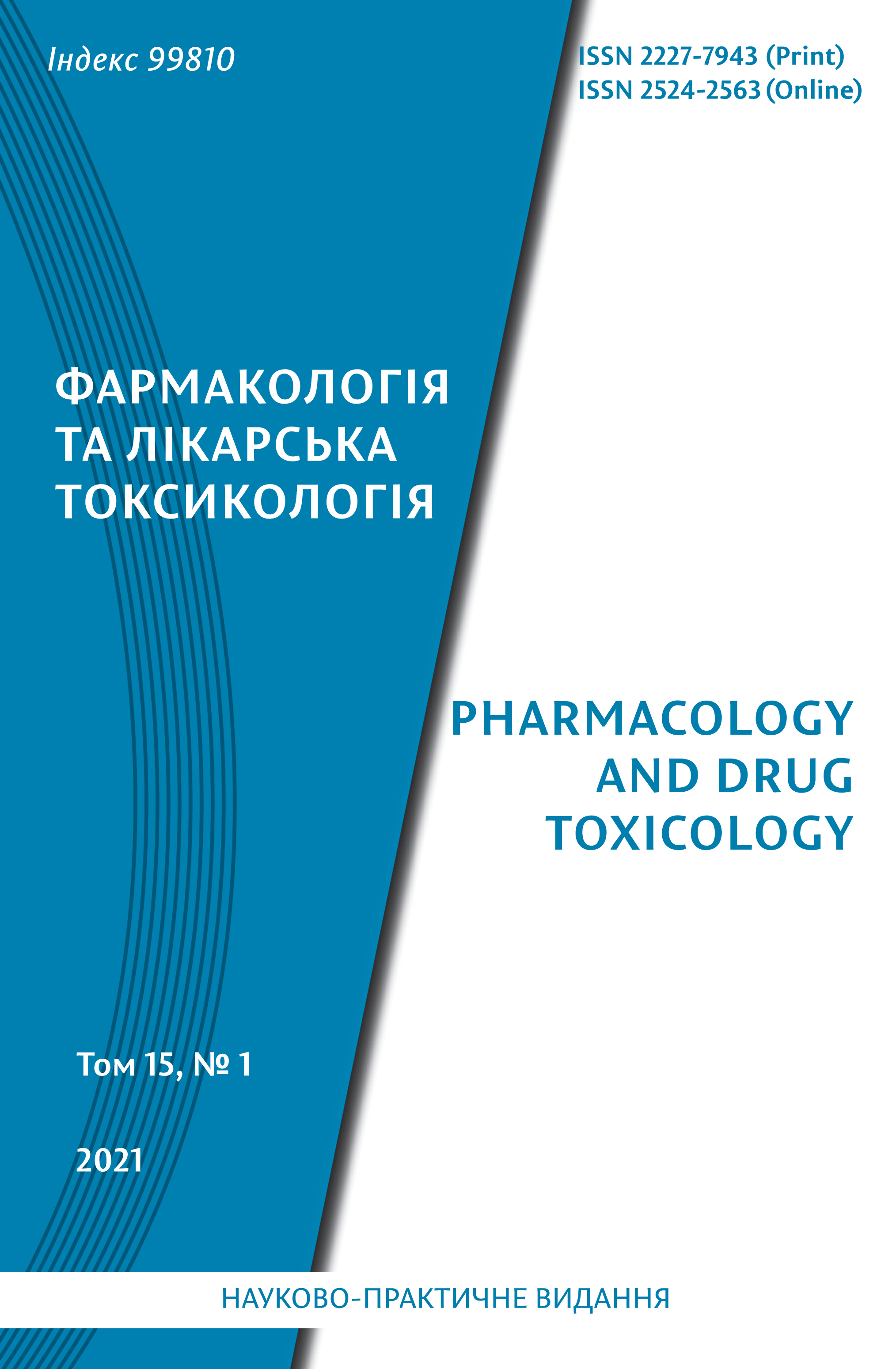Abstract
It is known that among all etiological factors underlying the formation of numerous diseases and pathological conditions, the most important is an intensification of free radical oxidation (FRO) on the background of suppression of the functional state of the antioxidant system (AOS). Thus, the key
pathogenetic mechanism of the origin and development of pathology is the violation of prooxidantantioxidant homeostasis, thereby the process of lipid peroxidation manifests itself.
The modern concept of pharmacotherapy of diseases, the pathogenesis of which is based on the initiation of lipid peroxidation, is known to be the rational use of highly effective and safe drugs of different pharmacological groups, which can correct prooxidant-antioxidant balance in the body.
The aim of the study is to conduct a comprehensive in-depth analysis of the antiradical and antioxidant effects of acetylcysteine under the conditions of experimental lipid peroxidation activation.
The experiment was performed on 112 white outbred sexually mature rats of both sexes with an average weight of 170–230 g. Initiation of lipid peroxidation was reproduced by daily (in the morning) oral administration of the well-known powerful prooxidant delagil (chloroquine phosphate) (manufactured by
ICN Hungary JSC) in a dose 30 mg/kg as a 0,6 % aqueous solution. The mechanism of its action related with formation and branching of FRO reactions. Acetylcysteine was used for therapeutic purposes throughout the study period orally at daily dose of 100 mg/kg as a 2 % aqueous solution. The intact rats
received an appropriate volume of sodium chloride solution orally.
To assess the state of antiradical and AOS of the body, as well as their functional relationship, we used parameters of biochemiluminescence and calculated the following indicators: AOS power (P), radical pool (RP), absolute radical activity (AR), absolute antioxidant activity (AA), prooxidant-antioxidant balance (PB),
power of AOS (PA). Calculation of the studied parameters was performed using a computer program and statistical non-parametric Mann-Whitney U-test.
The absence of significant difference between the values of AOS power in the intact and experimental rats throughout the experiment indicates the ability of acetylcysteine significantly enhance functional capacity of the components of the enzymatic and/or non-enzymatic parts of the antioxidant defense system. Administration of acetylcysteine significantly reduces RP in an average of 1,29–1,52 times as to similar values in the control group of animals throughout the experiment. Based on the results of the study, it is possible to conclude that the AA dynamics under acetylcysteine use demonstrates its pronounced
antioxidant properties, due to the presence of sulfhydryl group in the structure of its molecule. The effect of acetylcysteine realized by increasing the activity of antioxidant processes, as evidenced by an increase in the value of PB compared with the control during all periods of the study, especially after 6 and 8 weeks
(by 39 and 42 %). Under administration of acetylcysteine it is significantly enhances the power of the AOS (PA) by 1,45 times after 8 weeks of the study compared to the control. Moreover, under the action of acetylcysteine, this parameter exceeds even the corresponding level recorded in the group of intact
animals.
As a result, the experimental study proved pronounced antiperoxide effect of acetylcysteine, based on the prevention of initiation and branching of free radical processes relative to the background level, and made it possible to evaluate comprehensively the real state of prooxidant-antioxidant homeostasis in the body.
